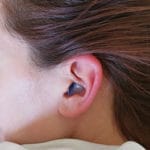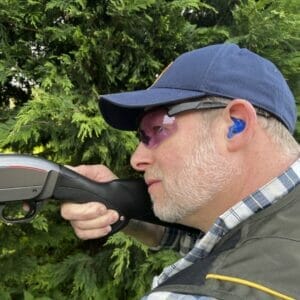Spring is here and many of us are bringing the lawn mower out of hibernation, kickstarting the woodwork project and spending the lighter evening’s doing DIY jobs that couldn’t be done during the winter. A lot of DIY tasks require machinery which make noise – many of which are not easy on the ears and unlikely to be incorporated into songs which feature on your Spotify playlist. The noise can be damaging to your hearing and it is important to make sure you protect yourself from these when doing DIY at home. This form of hearing protection comes in earplugs.

How loud is loud – the technical bit
Noise is measured in Decibels (dB), and any exposure over 85dB can lead to Noise Induced Hearing Loss. Although exposing your ears to certain noises will not mean you immediately experience hearing loss, repeat exposure over time can cause damage and your hearing will suffer the consequences in the future. In the workplace, if your hearing is exposed to over 85dB, it is a legal requirement to wear hearing protection – we believe this rule should apply at home too.
Below are some examples of DIY related tasks, their noise rating in dB, and how long you can be safely exposed before action needs to be taken.
Lawnmower – 94dB – 1hour
Handheld drill – 100dB – 15mins
Chainsaw – 110dB – 1 and half minutes
Pressure washer – 100dB – 15 minutes
Hedge Trimmer – 103dB – 7 and half minutes
You may not be exposing your ears to damaging levels of noise from undertaking one task, however if you’re a keen DIY bean then the accumulated effect from doing multiple tasks could mean you are. Not to sound too doom and gloom, but it is important to act now before you lose your hearing in the future – after all, once you’ve lost it, there is no cure to get it back.
What signs to look out for to indicate it is too loud
Remembering how loud different noises are, and having access to equipment to test how loud your lawnmower or drill is, is not realistic for the many. However, here are some handy tips to help you note when it’s too loud.
- Arms-length hearing – if you are unable to hear what someone is saying an arms-length away (or a metre/3 feet), then the noise is too loud
- If you experience a ringing in your ears after you turn the machine off, which is known as Tinnitus (read more about this here), this means your hearing has been damaged. The ringing may go away, but it’s an indicator you need to protect your ears before exposing to the machinery again
- You must raise your voice to be heard
- Speech sounds muffled or dull after you turn off the noise
Being aware of noise and how being loud is damaging is the first step down the path to protecting the longevity of your hearing. Next, you need to act – this comes in the form of using ear plugs/hearing protection.
SnugsShield (Work) – the must have DIY hearing protection equipment
SnugsShield (Work) is our custom fit hearing protection with attenuated filter designed to ‘quieten’ and reduce damaging noise to safer levels. They protect your hearing whilst allowing you to communicate normally and hear relevant background sounds.
Custom fit for your ears only, you can wear them in comfort for hours whist you carry out your DIY tasks. Made from a medical grade silicone, they are durable and can last for years, making them a safe investment when it comes to protecting your hearing in the future.
Read more and order here












